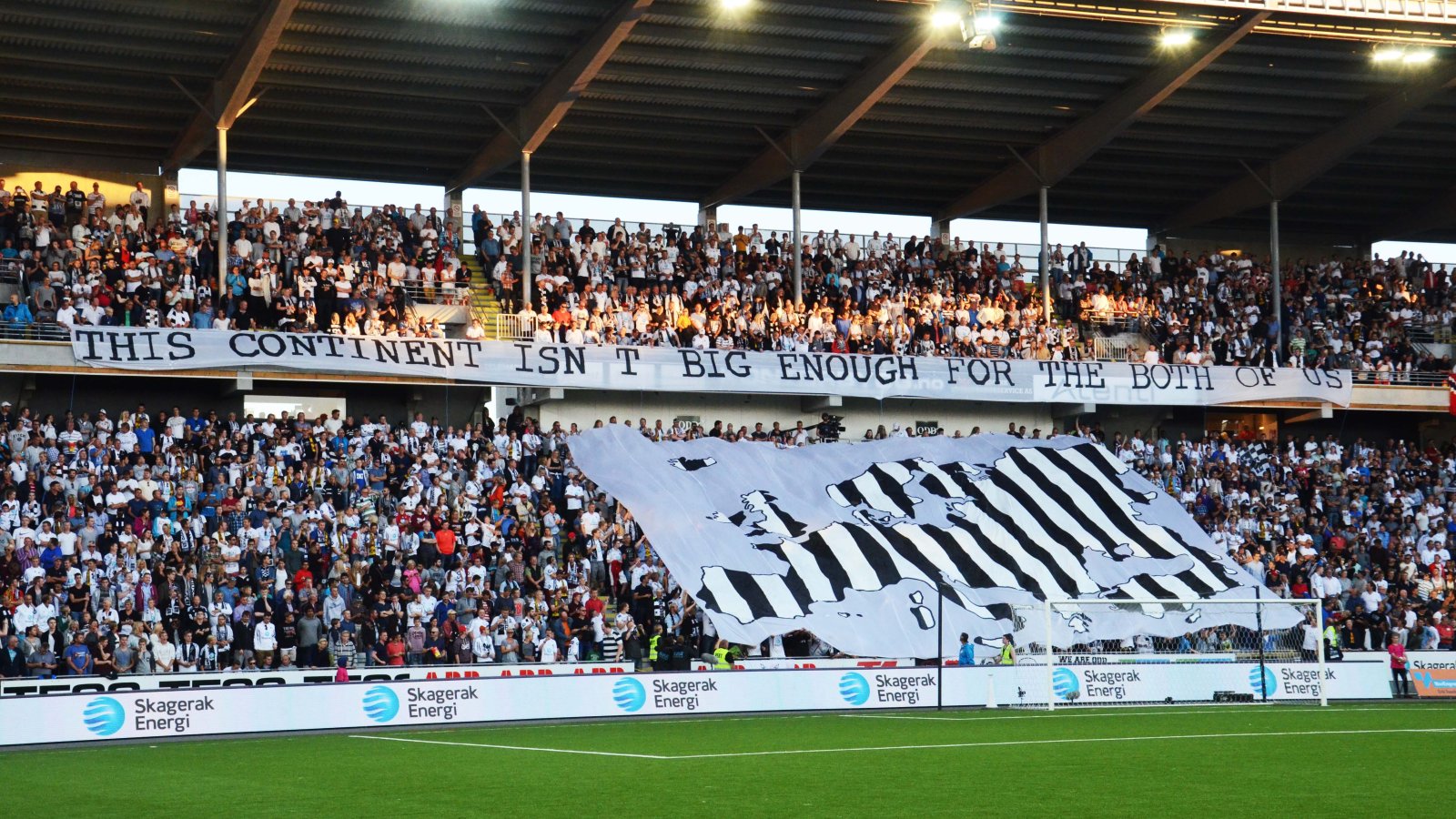
The Club
Founded on March 31st 1894, Odds Ballklubb is Norway's oldest existing football club.
Odds Ballklubb, commonly known as Odd, is a Norwegian football club from Skien. Originally the football section of a multi-sports club, founded in 1894 nine years after the club's founding. Odd plays in the Norwegian top division, Eliteserien, and holds the record winning the Norwegian Football Cup the most times (12), the last coming in 2000. The club was known as Odd Grenland between 1994 and 2012. Founded in 1894, Odd is the oldest existing football club in Norway.
Brief history
IF Odd was founded in 1885, and is thus one of the older sports clubs in Norway still in existence. The name derives from Viktor Rydberg's novel Seierssverdet, where one of the main characters was a Norwegian athlete called Orvar Odd.
In the beginning, IF Odd was mainly focused on gymnastics, and also had sections for Nordic skiing and track and field. A sub-section for football named Odds BK was founded on 31 March 1894. This was the club's second effort to do so, some time after English workers at nearby Skotfoss brought the game of football to Skien, and the city decided to buy a football. Odd is counted as Norway's oldest football team still in existence.
Odd won the Norwegian Football Cup in 1903, 1904, 1905, 1906, 1913, 1915, 1919, 1922, 1924, 1926, 1931 and 2000, more than any other team in Norway. The club has also been losing finalist in 9 cup finals. During the period from 2007 - 2010, Odd lost no less than 4 semi-finals in a row. It is fair to say that we are the number one cup team in Norway!
In the late 20th century, the men's team struggled in the lower divisions for many years, but made it back to the Premier Division in 1999 and stayed there until they were relegated in 2007. The team had survived relegation twice; first in 2005 after a dreadful start of the campaign, then in 2006 when the team only survived relegation by beating Bryne in the relegation play-offs.
In 2007 the team was relegated to the Norwegian First Division after being beaten by Bodø/Glimt in the relegation play-offs. In 2008, with three games still to play, Odd secured the promotion back to the Premier Division after winning 4–0 at home against Hødd.
On 25 September 2011, Odd player Jone Samuelsen scored what is claimed to be the longest headed goal ever scored in a match, in a match against Tromsø, when he headed the ball from within his own half of the pitch into Tromsø's open goal, the goalkeeper having come forward for a late corner in the match. Norwegian Police were invited to measure the distance, and calculated the length as to be 58.13 metres.
Recent years
Since current coach Dag Eilev Fagermo took over as a head coach in 2008, the club has established itself in the upper half of the Norwegian Premier Divison. In average the club has gained a league position of 3,8 the last nine seasons. The club has also achieved its first league medals in modern history by finishing 3rd in 2014 and 2016.
In 2015 Odd played in the Europa League qualification play-offs. Odd played two breathtaking matches against the German giants Borussia Dortmund. The first leg was played in Skien, were Odd almost grabbed a shocking win. During the first 22 minutes of the game Odd scored three times, but eventually had to succumb a defeat 3-4.
The return at Signal Iduna Park became a walk in the park for Borussia Dortmund winning 7-2, but for Odd it was the first taste of the possibilites in European football. As of 2017, the club will once again try to shake their foreign oponents.
Odd also participated in the Europa League qualifications in 2016, but failed to pass the 2nd round as the Greek team PAS Giannina became too strong.
Stadium
The stadium has been undergoing an extensive redevelopment process, begun in November 2006, which produced a modern all-seater venue by April 2008. Part of the finance Odd needed for the project was obtained through the lease of the stadium's naming rights to the club's main sponsor since 1995, the Norwegian power company Skagerak Energi.
The pitch has been rotated 90 degrees in order to free up space. As is increasingly common in Norway, the new surface is artificial. The old main stand is now an end stand, incorporated into the new structure as the only surviving feature of the old stadium.
Three new two-tiered stands was completed between 2007 and 2008. The east and west stands has a capacity of 4,300 while the south end seats around 3,000. Construction of the west stand had progressed far enough by April 2007 to allow spectators on the lower tier for the first home match of the season, on 15 April. Total capacity was at first 6,000 And increased gradually throughout 2007. The old stadium had a capacity of about 8,600, of which 5,600 were seated.
In 2017 the stadium capacity is 11767.

Skagerak Arena
-
Surface: Artificial grass with undersoil heating
-
Pitch size: 105m x 68m
-
Capacity: 11767
-
Average attendance 2016: 8039
-
Attendance record: 12.436 (Borussia Dortmund 2015)
-
Our home since 1923
-
The only stadium in the Norwegian Premier Division with waste recycling


